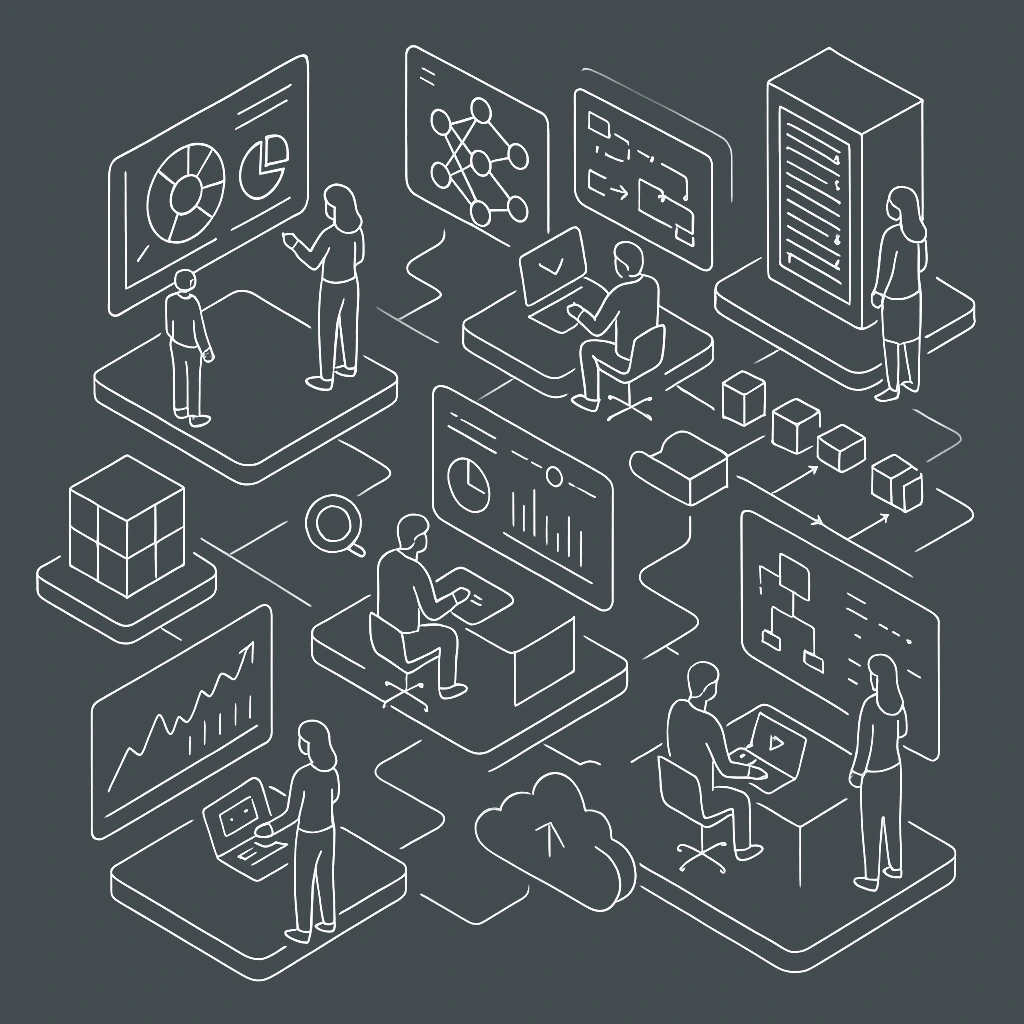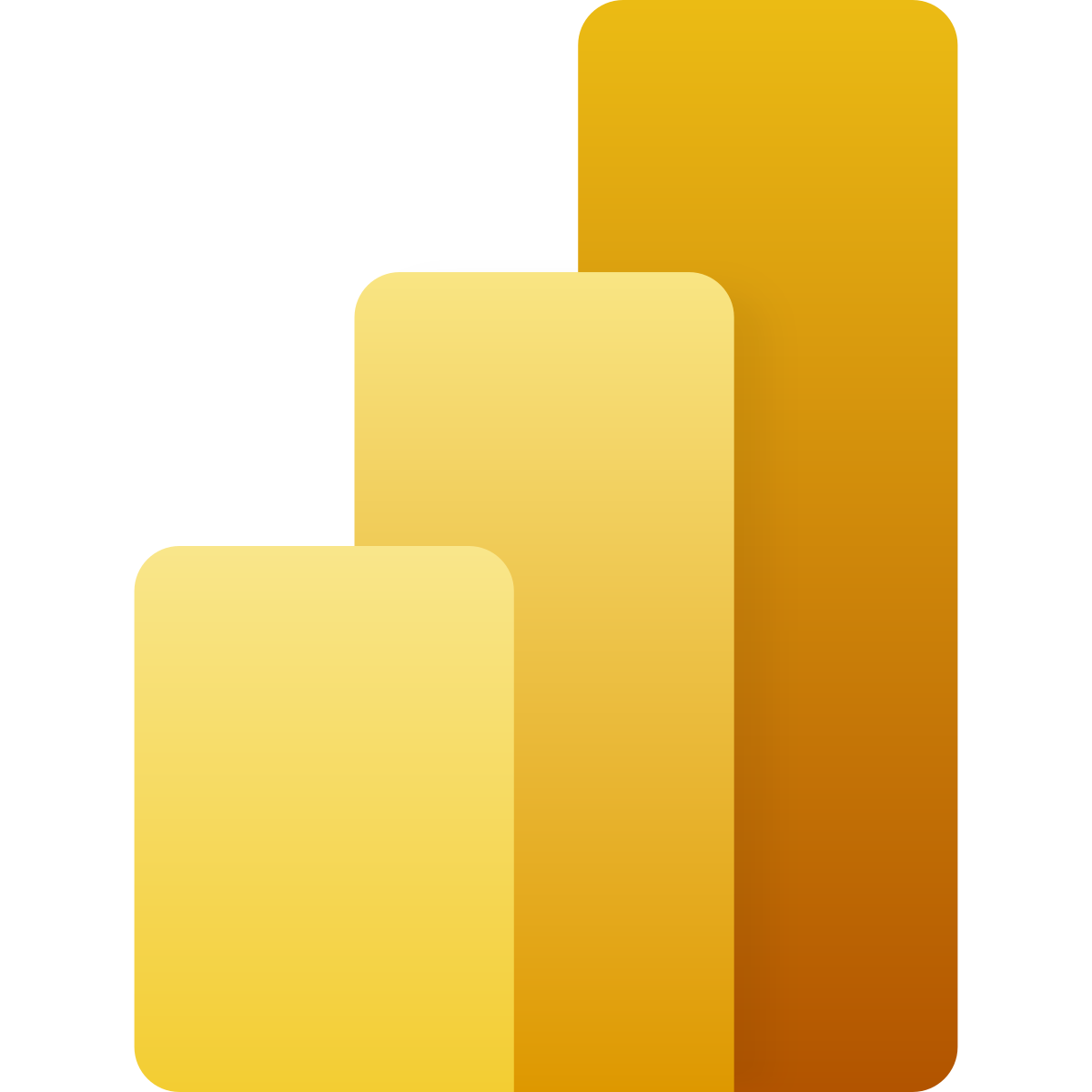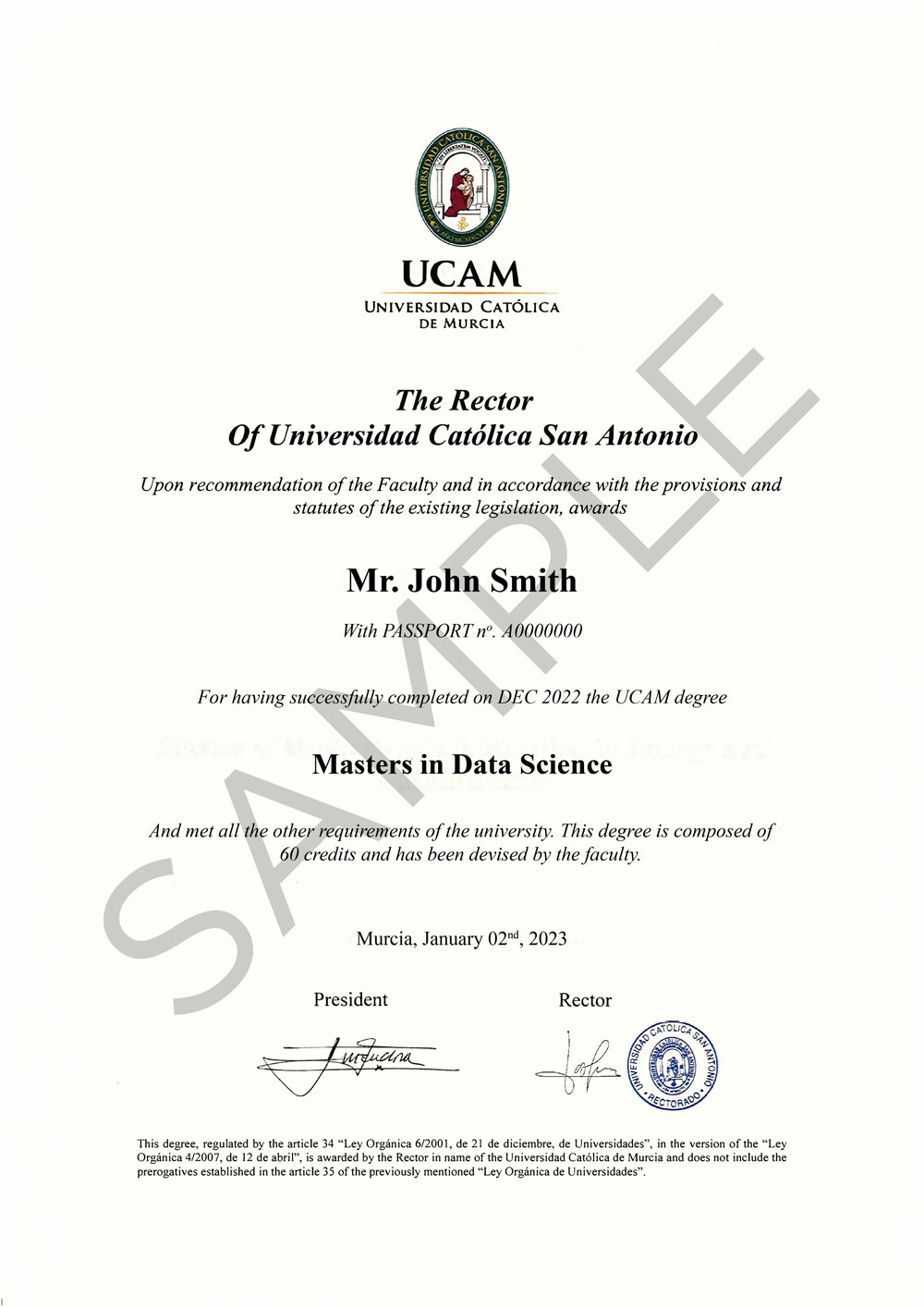

Master in Data Science


- Duration
12 Months
- Modules
6 Modules
- Assignments
6 Assignments
- Format
Blended Learning
- Projects
3 Projects
- Level
Advanced
Globally Recognized & Accredited:




Students Trained Globally
Industry-Aligned Programs
Countries with Active Alumni
Career Transition Success
- Industry-Standard Technology Stack
Tools & Technologies That Power Success
Master the complete data science ecosystem with hands-on experience using industry-leading tools and frameworks. Our Advanced Program in Data Science equips you with practical skills in Python programming, data manipulation, visualization, and machine learning – preparing you for real-world data challenges.
- Production-Ready Skills
- Industry-Relevant Tools
- Hands-On Learning
Python

MySQL

Anaconda

Jupyter Hub
Pandas
NumPy
Seaborn
Matplotlib
Excel
GIT
HTML

CSS
- Industry-Standard Technology Stack
Tools & Technologies That Power Success
Master the complete data science ecosystem with hands-on experience using industry-leading tools and frameworks. Our Master in Data Science program equips you with practical expertise in Python programming, statistical analysis, data visualization, and machine learning libraries – preparing you for real-world data science challenges.
- Production-Ready Skills
- Industry-Relevant Tools
- Hands-On Learning
Python
Keras

TensorFlow
Scikit-learn
Pandas
NumPy
Seaborn
Matplotlib
Excel

Open CV

Power Bi

Spacy
Universidad Católica de Murcia, Masters Degree
Universidad Católica de Murcia (UCAM), founded in 1996, is a fully-accredited European University based out of Murcia, Spain. With learning centres in the Middle East and Southeast Asia, UCAM aims to provide students with the knowledge and skills to serve society and contribute to the further expansion of human knowledge through research and development. The university offers various courses, including 30 official bachelor’s degrees, 30 master’s degrees and ten technical higher education qualifications through its Higher Vocational Training Institute, in addition to its in-house qualifications and language courses. The programmes offered are distinguished in Europe and worldwide, with good graduate employability prospects as well. UCAM is accredited by ANECA (National Agency for Quality Assessment and Accreditation of Spain) and the Ministry of Education regarding 17 of its undergraduate degrees.

Eligibility
Prerequisites
Course Modules
Foundations of Data Analysis and Preparation
This module builds a strong foundation for working with data by introducing essential techniques for data cleaning, manipulation, and analysis. Learn the key programming languages, tools, and frameworks essential for any data scientist, with a focus on practical implementation.
Exploratory Data Analysis and Visualisation
Gain the ability to summarise, transform, and visualise data using Python and its popular libraries. Develop fluency in handling variable types, names, and values—while mastering operations with dates, strings, and advanced charting methods like histograms, scatter plots, and boxplots.
Hands-on Data Research Skills
Through exploratory data analysis, learners will enhance their ability to generate insights from datasets, apply statistical concepts, and chain multiple tidying operations using the pipe operator. These skills will empower learners to approach real-world data challenges confidently.


Learning Outcomes
By completing this module, you will:
- Analyse datasets using visualisation, counting, and summary tools
- Acquire foundational skills in variable manipulation and data formatting
- Learn how to chain multiple data tidying operations using the pipe operator
- Work effectively with different data types, including dates and strings
- Apply core concepts of statistics, linear algebra, and Python in real scenarios
- Master widely-used Python libraries such as Pandas, Matplotlib, and Seaborn
Excel-Based Analytical Modelling
Learn to build robust spreadsheet models by translating business scenarios into structured mathematical representations. Understand core Excel functions, auditing techniques, and the use of What-If analysis for model reliability and prediction.
Decision Analysis and Analytical Reasoning
Explore tools like payoff tables, utility theory, and decision trees to structure decision-making under uncertainty. Learn to compute probabilities and apply both predictive and prescriptive modelling techniques to solve real-world business challenges.
Business Intelligence with Microsoft Power BI
Gain hands-on experience with Power BI to manage data, perform advanced visualizations, and apply analytical expressions (DAX). Learn how to transform raw data into meaningful dashboards and actionable insights for strategic decision-making.


Learning Outcomes
By completing this module, you will:
- Critically analyze business data in the context of strategic decision-making
- Understand how business analytics supports core management functions
- Retrieve, organize, and manipulate datasets using spreadsheet models
- Apply statistical analysis and data visualization for data-driven decisions
- Use Power BI to build interactive dashboards and derive insights from data
- Incorporate predictive models and structured decision tools into business processes
Foundations of Data Mining & Pattern Discovery
Gain essential skills in extracting meaningful insights from massive datasets using data mining techniques. Learn to identify patterns, correlations, and trends that drive better business decisions and strategic outcomes.
Hands-On Data Processing with Python
Explore practical data integration, cleansing, and transformation using Python libraries like NumPy and matrix-based operations. Understand how to represent complex datasets through tables, graphs, and text formats for effective analysis.
Text Mining, Pattern Recognition & Evaluation
Dive deep into the world of text mining, frequent subgraph mining, and classification. Use tools like Power Query Editor for advanced filtering and evaluate risks, sensitivity, and outcomes through modern data modeling techniques.


Learning Outcomes
By completing this module, you will:
- Understand the core principles of data and text mining, including key patterns and knowledge extraction methods
- Learn how to preprocess and transform data for mining using Python and structured databases
- Apply data mining models to real datasets for classification, prediction, and forecasting
- Discover scalable methods for extracting sequential, associative, and subgraph patterns
- Engage in practical data modeling, evaluation, and deployment processes
- Analyze risk and sensitivity using predictive metrics and intelligent data filters
Predictive Modeling and Algorithmic Intelligence
Dive deep into the foundational algorithms used across data science—focusing on their role in building powerful predictive models. Understand the principles behind classification, regression, and ensemble learning, and how they are applied when conventional techniques fall short.
Model Evaluation and Practical Implementation
Learn how to structure data through splitting techniques like holdout and k-fold cross-validation. Evaluate performance with categorical and continuous outcomes, and gain hands-on knowledge in managing class imbalances—an essential skill for real-world datasets.
From Theory to Industry-Level Solutions
Explore the mechanisms, strengths, and applications of various algorithms, from logistic regression to neural networks. Understand how to use the right model for the right challenge, whether it’s SVMs for margin-based classification or ensemble models for boosting accuracy.


Learning Outcomes
By completing this module, you will:
- Understand and apply key algorithmic concepts such as divide-and-conquer, sorting, searching, and dynamic programming
- Evaluate and select appropriate data structures to enhance computational efficiency in data science workflows
- Design and assess predictive models using logistic regression, k-NN, SVMs, neural networks, and Bayesian methods
- Implement strategies to handle imbalanced datasets and choose appropriate validation techniques
- Gain proficiency in building classification and regression trees and applying ensemble learning for performance enhancement
- Translate algorithmic understanding into real-world data science solutions
Predictive Modelling with Regression Techniques
Master foundational and advanced regression techniques including linear, logistic, and multiple regression. Understand how to model real-world relationships and use statistical inference to derive actionable insights.
Applied Statistical Techniques for Real-World Scenarios
Explore generalised linear and additive models to capture complex interactions in data. Use these methods to model experimental designs and discover meaningful relationships between variables.
Data Interpretation and Visualisation with Tableau
Bridge the gap between raw data and decision-making using Tableau. Learn to shape, transform, and visually present your statistical models for clear and intuitive communication.


Learning Outcomes
By completing this module, you will:
- Differentiate between predictive models and master the concepts of linear regression
- Understand model algorithms and apply them to real-world datasets
- Analyse outputs from logistic regression and understand when to use discriminant analysis
- Evaluate models for accuracy and interpret results in a meaningful, structured way
- Use Tableau to create and interpret data models, reports, and visual narratives
AI in Action: From Theory to Real-World Impact
Understand how artificial intelligence transforms modern business with intelligent decision-making systems, automation, and predictive insights. Learn the foundational tools behind AI, including neural networks, deep learning, and natural language processing.
Unlocking the Power of IoT and Blockchain
Dive into how IoT and Blockchain are reshaping industries—from smart factories to secure, decentralized systems. Gain knowledge on sensors, actuators, protocols, and real-world IoT implementations. Explore blockchain architecture, smart contracts, and Hyperledger to understand secure data exchanges.
Integrating Intelligent Systems for the Future
Build AI and ML applications supported by blockchain technology. Learn to design intelligent business models using distributed ledgers and digital logic to meet modern enterprise needs with transparency, scalability, and automation.


Learning Outcomes
By completing this module, you will:
- Grasp the fundamentals of AI and its business applications, including AI-driven decision-making
- Develop AI implementation strategies tailored to business environments
- Understand the structure, purpose, and potential of Blockchain and Distributed Ledger Technologies
- Explore Hyperledger, smart contracts, and their integration into real-world business scenarios
- Discover the role of IoT in modern operations through hands-on sensor, actuator, and protocol knowledge
- Learn to build intelligent, future-ready solutions using AI, IoT, and Blockchain technologies
Research-Driven Approach to Data Science
Dive deep into the core of independent research practices in data science. This module equips learners to craft research or design questions, relate them to existing knowledge, and carry out rigorous investigations that demonstrate analytical depth and academic maturity.
From Concept to Execution
Explore modern methods in data science—ranging from probability, inference, and modelling to data visualization, mining, and regression. Understand how to leverage these tools for real-world organizational challenges and innovations.
Capstone Project for Real-World Impact
Learners will undertake a data science project or dissertation that showcases their cumulative knowledge. This final project serves as a portfolio piece that reflects competence in analytics, decision-making, and change implementation within a business context.


Learning Outcomes
By completing this module, you will:
- Conduct independent research or development projects within a data science framework
- Apply analytical and machine learning techniques to solve practical problems
- Present technical findings clearly to both expert and non-specialist audiences
- Develop detailed professional documentation for data projects
- Evaluate outcomes based on current academic research and industry standards
- Produce a final data product that can be showcased to employers or academic institutions
Your Success Story Starts Here
Every image here tells a story of transformation, dedication, and success. Be the next to wear the cap and gown. Enroll today, and let your journey begin.
Student Reviews
Every student has a story—of ambition, of challenge, of growth. In their own words, they share how Airtics became a turning point in their learning journey and helped them move closer to their goals.
Mohammed Ajmal

Airtics offers a truly transformative learning experience. The course content is up-to-date, the mentors are incredibly supportive, and the flexibility of the online platform made it easy to balance with my work. Highly recommended for anyone looking to upskill!
- Verified Review
Mohammed Ajmal

Airtics offers a truly transformative learning experience. The course content is up-to-date, the mentors are incredibly supportive, and the flexibility of the online platform made it easy to balance with my work. Highly recommended for anyone looking to upskill!
- Verified Review
Mohammed Ajmal

Airtics offers a truly transformative learning experience. The course content is up-to-date, the mentors are incredibly supportive, and the flexibility of the online platform made it easy to balance with my work. Highly recommended for anyone looking to upskill!
- Verified Review
Mohammed Ajmal

Airtics offers a truly transformative learning experience. The course content is up-to-date, the mentors are incredibly supportive, and the flexibility of the online platform made it easy to balance with my work. Highly recommended for anyone looking to upskill!
- Verified Review
Real-World Capstone Projects
Apply your data science skills to solve real business challenges through hands-on projects. Choose from our curated capstone projects or bring your own organizational problem to create a portfolio that showcases your expertise to future employers.
House Rental Predication
Image Classification
Business Insights Reporting
Create interactive business dashboards that transform raw data into actionable insights and visual reports.
Learn from Industry Leaders & Experts
Learn from the best in the field. Our faculty combines academic brilliance with industry expertise, featuring PhD holders, senior data scientists, and AI researchers from top organizations.
Global Student Community
Students from 60+ Countries Worldwide









Frequently Asked Questions
Accelerated data science career guidance with world-class training on the most in-demand data science and machine learning skills. Training and hands-on experience with key tools and technologies including Python, PowerBi, and concepts of Machine Learning.


















